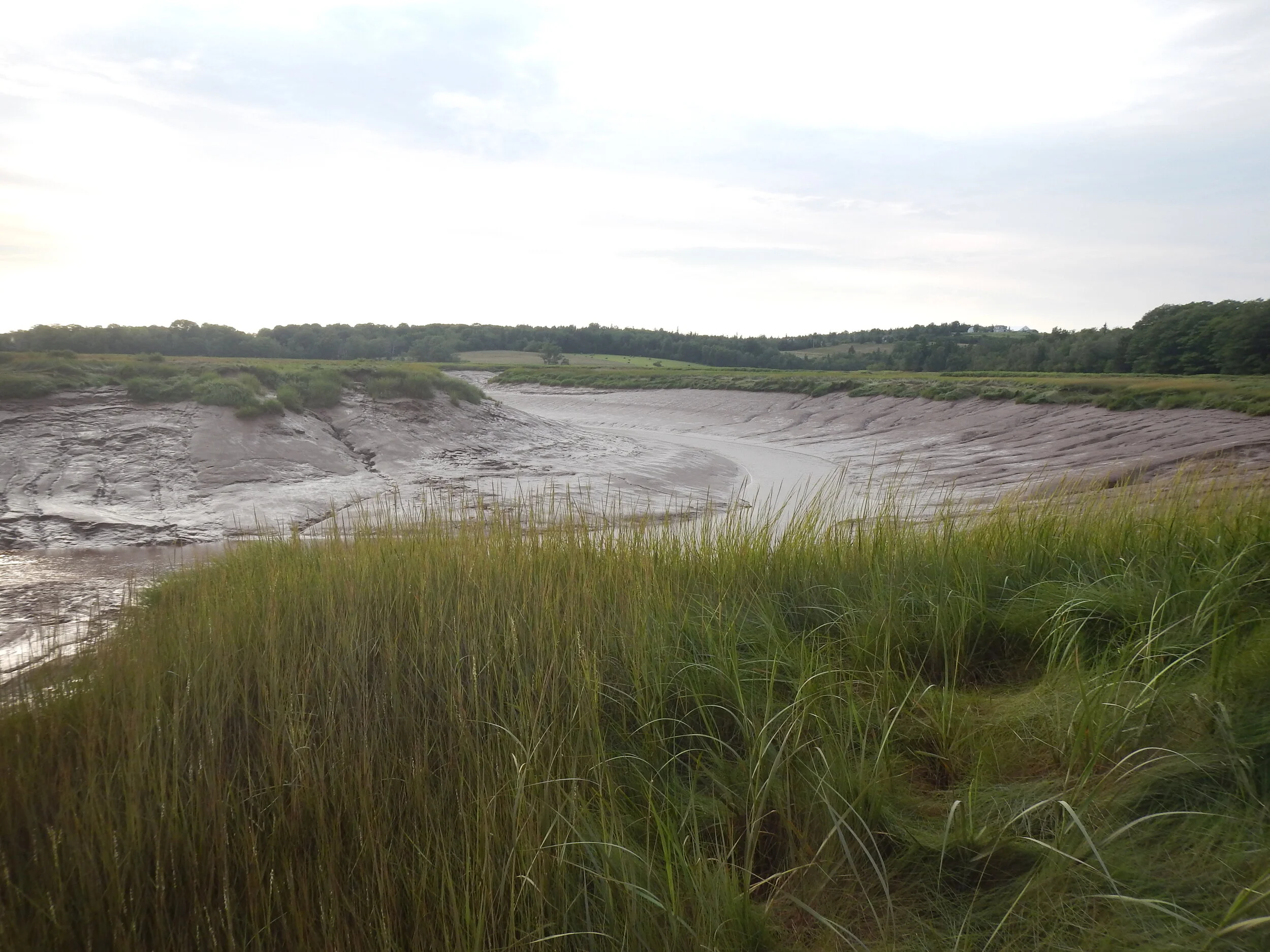Nature-Based Climate Change Adaptation
Nature-Based approaches to climate change adaptation recognize the value (return on investment) of ecosystem services provided by natural systems (e.g. salt marshes, seagrass, reefs and dunes) or designed systems that mimic natural ones (e.g. living shoreline, buried revetment). These approaches keep or reintroduce natural structures and materials in the landscape to control such things as flooding, erosion, water or air quality. It may also include reserving enough land and water space for the growth and movement of these natural systems. All of these approaches have additional social, psychological, environmental and economic benefits. Despite this, there is still a reluctance to trust ‘the blade of grass’. Our research is trans-disciplinary and involves collaboration with social scientists at Dalhousie University, professional engineers (CBCL, Queens University), restoration practitioners (CBWES, Helping Nature Heal) and NGOs (EAC, Coastal Action, Clean Foundation).
We are currently building resilience to climate change impacts along Canada’s coasts by developing a framework for implementing nature-based adaptation strategies and demonstrating the success of these strategies through our Making Room for Wetlands (funded by DFO) and Making Room for Movement (funded by NRCAN).
Our nature-based climate adaptation research falls within three main themes:
Design, Implementation and Monitoring of Natural Infrastructure
Globally there is increasing acceptance for the design and application of natural infrastructure and ecosystem based approaches for climate change adaptation. “Natural infrastructure can offer other valuable environmental and social benefits that are often not attainable through the implementation of grey-engineered solutions” (Insurance Bureau of Canada, 2018).
The Centre builds on over two decades of research and experience as practitioners on the dynamics of coastal systems, accessing the most up to date research and ensuring that we are keeping up with emerging knowledge and practices surrounding nature-based solutions for climate change adaptation. This includes managed realignment, living shorelines, shore stabilization, tidal wetland, and dune restoration.
Strategic Managed Realignment of Dyke Infrastructure
Strategic managed realignment involves the planned removal of dyke infrastructure or portions there-in (including water control structures or aboiteau) and re-introduction of tidal exchange. A new dyke is either built landward of the former structure or the topography of the land serves as a barrier to additional flooding. Restoration of a more natural hydrology with import of sediments and seeds, allows vegetation to establish and a tidal wetland ecosystem to evolve. CBWES and SMU have a long history of collaboration, design, construction, and monitoring of managed realignment and salt marsh restoration sites. All of these sites serve as ‘living laboratories’ for testing different restoration and monitoring techniques for tracking restoration trajectories and evolution of a new intertidal landscape on a former agricultural surface.
Earlier work, such as the St. Croix Tidal Wetland Restoration Project in 2010, were habitat compensation projects within the NS Department of Transportation and Infrastructure Renewal (Bowron et al.,2012). Climate change adaptation and mitigation (carbon storage) was a secondary, derived benefit. Long term monitoring allowed us to quantify rates of sedimentation and spatial patterns of vegetation colonization using low altitude blimp aerial photography, highlighting the important role of sediment as a disturbance agent (B. Lemieux, MSc thesis 2012). Although elevation is understood to drive
Vegetation types in salt marshes in the region, St. Croix is one of the sites where we show that salinity can differentiate vegetation types at the same elevation and the importance of freshwater inputs (Porter et al., 2015).
The Making Room for Wetlands project provided the opportunity to formalize the stages of managed realignment to reflect the iterative and complex process of moving from site selection and engagement with stakeholders and rights holders to implementation and application of the latest technologies for monitoring.
Both the Converse and Belcher St. sites provided opportunities to test different technologies including active planting of vegetation, semi-automated quantification of vegetation change and nature-based shore stabilization methods to reduce erosion.
Identifying Barriers and Drivers for Implementing Nature-Based Adaptation Options at the Coast
This is being accomplished through literature reviews, online surveys, interviews and focus groups lead by the Dalhousie School of Planning (Dr. Patricia Manuel, Dr. Eric Rapaport) and the School of Resource and Environmental Studies (Dr. Kate Sherren with post-doc Dr. Tuihedur Rahman) primarily within our Making Room for Movement Project.




